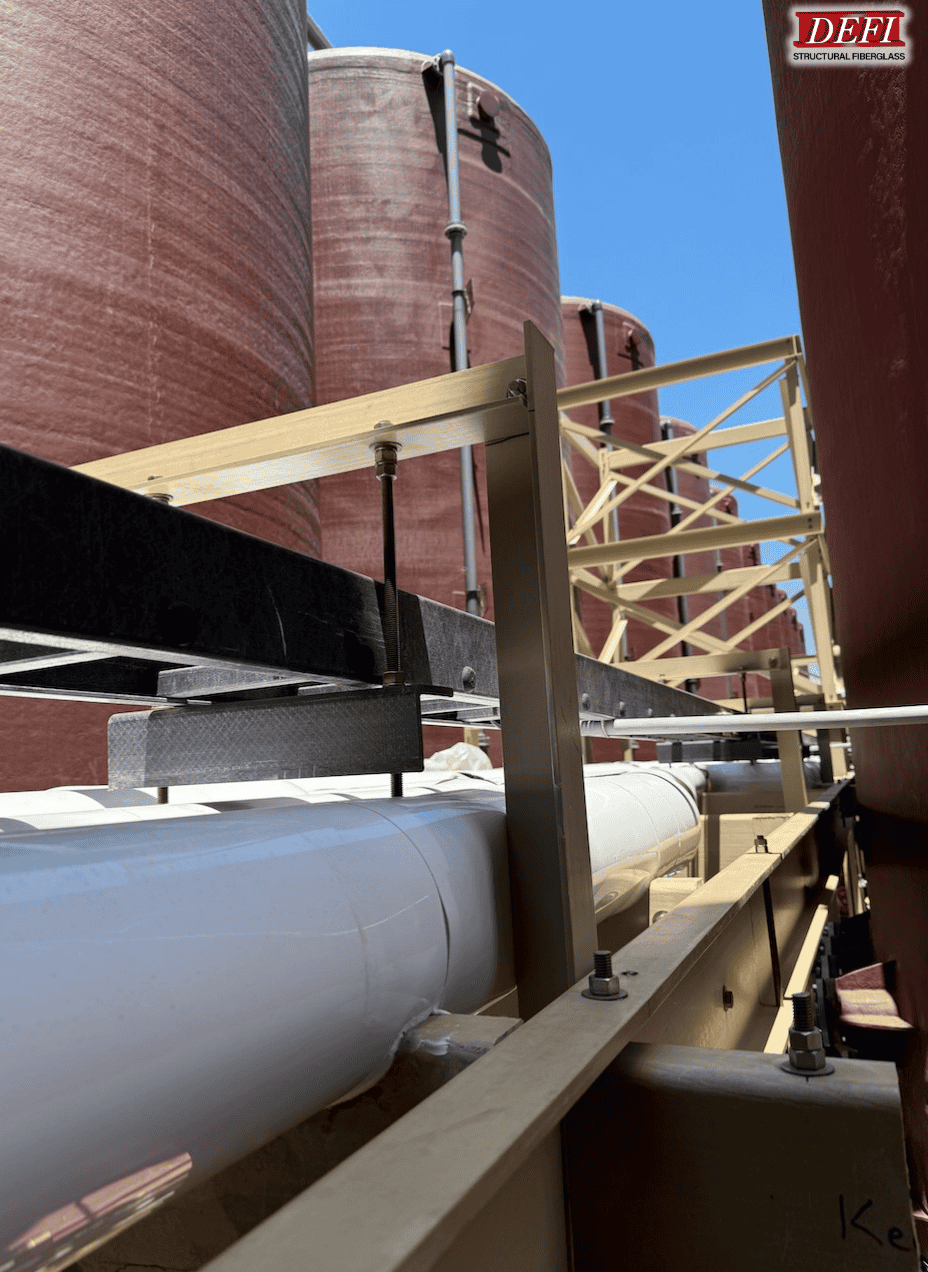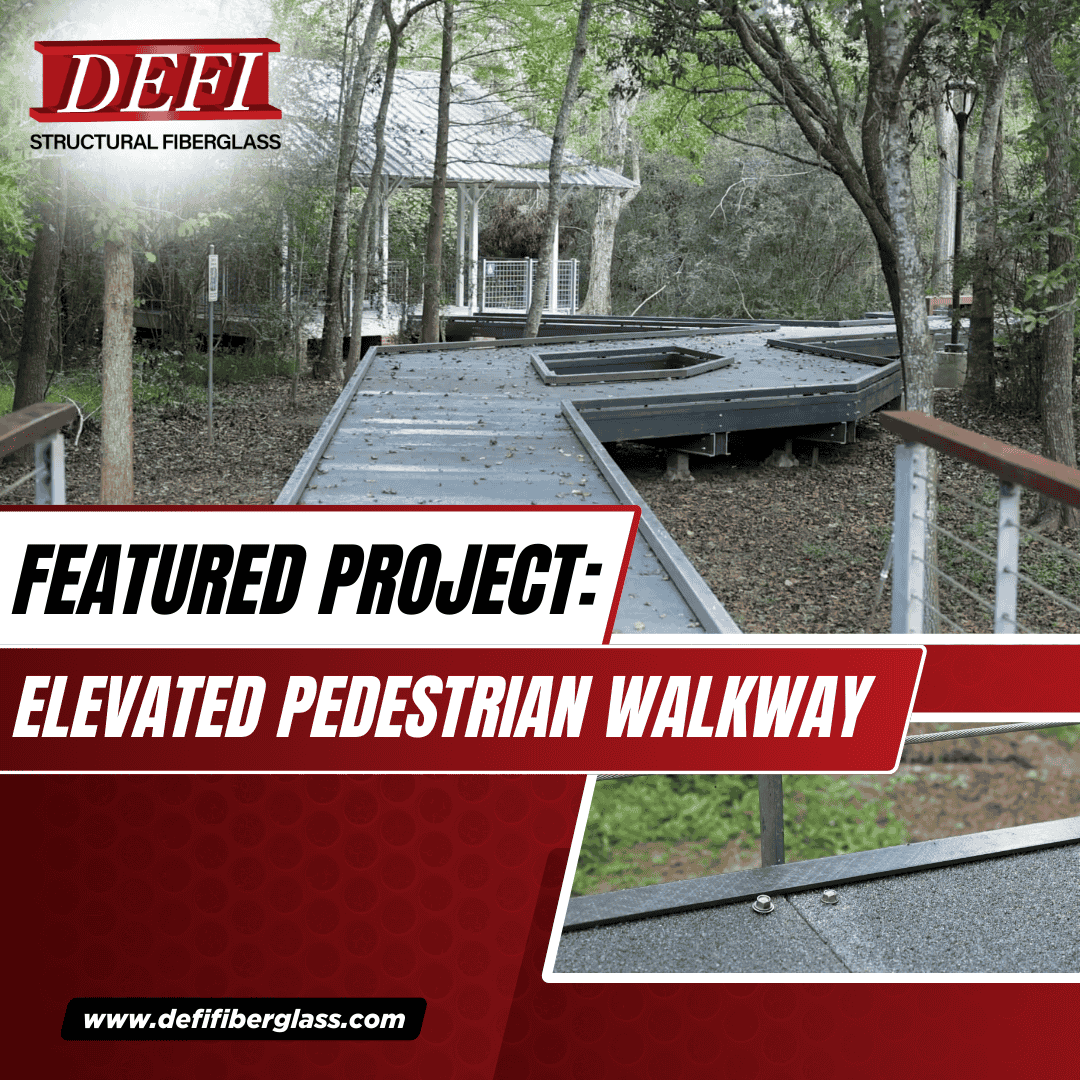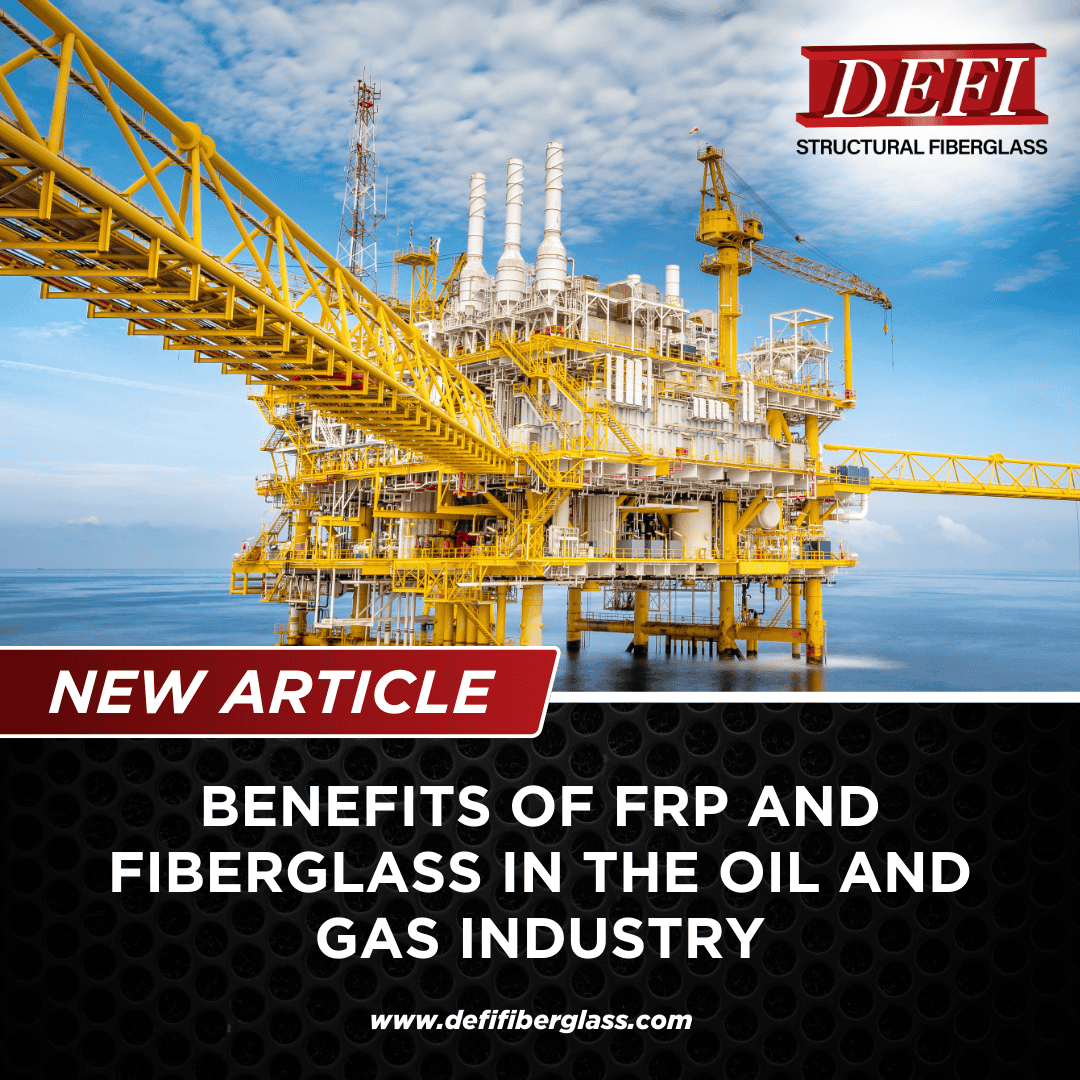A: Structural FRP can be installed by using hand tools such as drills and circular saws. All the corners and pieces are put together mechanically, typically with 3/16 stainless steel bolts. Because FRP is 1/3 the weight of steel, you don’t need big heavy equipment, riggers and crane operators in there. A lot of this can be installed by hand—it’s a quick easy installation.
With the economy struggling to recover from the COVID-19 pandemic, affordable infrastructure is in high demand. Unfortunately, the traditional material used for this infrastructure, steel— is as costly as it’s ever been.
As if that weren’t a big enough barrier to get through, steel also has some distinct liabilities and limitations across all applications.
Limitations And Liabilities Of Structural Steel
- Vulnerable to corrosives
- Requires heavy lifting equipment to install
- Is Conductive and can pose a shock hazard
- Is very heavy and often requires expensive foundation reinforcement
- Expensive freight charges
The list goes on and on. In actuality, steel has been a popular choice for so many years only because there was nothing better.
But that has changed.
STRUCTURAL FRP—THE MORE VALUABLE ALTERNATIVE TO STEEL
You may have heard of FRP, and chances are you’ve likely come across FRP in some form or fashion. If you’ve ever been in a gas station and noticed the plastic looking wall coverings, that’s FRP. Have you bought tools recently at Home Depot or Lowe’s with non-wooden handles—FRP. If you’ve purchased bathroom resurfacing with a new tub and walls—yes, that too is FRP.
In fact, FRP is used quite prevalently in a wide variety of applications and has been for years. However, what we are talking about is the advancement and use of structural FRP.
What Is Structural FRP?
Structural FRP are FRP building components comprised using standard fiberglass profiles such as angles, tubes, I-beams, and other shapes. FRP panels are manufactured using a lay-up process. Meaning the process is a matter of laying the different components on top of each other. Resin is laid onto polyester film, then chopped fiberglass is laid onto that.
DEFI Structural FRP however is manufactured using the pultrusion process. In this process, the raw materials—glass fibers and resins, are pulled into a die mechanically and combined. When cured, their strength is equal to steel but at a much lower weight.
The combination of the raw materials used and the pultrusion process give structural FRP benefits steel just can’t match:
- Extreme corrosion resistance
- Superior Strength to Weight Ratio
- Non-Slip attributes can be baked right in
- Non-Conductive
- Easy installation with basic tools
- Extreme heat resistance
That’s just a handful of the benefits FRP offers, but it also offers many long term and intangible benefits such as:
Durability
There are quite a few applications in manufacturing plants that have chemical corrosives or are exposed to harsh outdoor environments. Structures constructed from FRP easily withstand the day-to-day abuse of these environments with no damage. Steel, on the other hand, can rust, flake, and in some neglected situations—break, causing serious injury. You never have to worry about FRP’s structural integrity being compromised in these environments.
Economical
Another reason why using structural FRP is such an advantage for many applications comes down to pure economics. The manufacturing process of pultrusion produces the highest output volume at the lowest conversion cost.
Granted, the upfront cost of FRP is a bit higher than steel but only for the product itself. If you factor in freight and installation costs as well as maintenance—steel is incredibly more expensive overall. FRP is much lighter, cheaper to ship and it requires no maintenance. Of course, the installation of steel often needs cranes and special heavy lifting equipment. FRP, even on projects such as pedestrian bridges—the pieces can be moved on a forklift or carried by laborers. The installation is also easy with pre-drilled and formatted holes and the ability to use common handheld tools.
Safety
The safety of steel can be compromised by so many different hazards. Electrical, corrosives, the elements. Safety is crucial in both the workplace infrastructure and public-use structures. At DEFI we produce FRP handrails in various designs that exceed OSHA requirements.
Special resin combinations can be used to offer traits such as heat and fire resistance in our vinyl ester and polyester handrails. We can also “bake in” any color including safety yellow and even UV barrier coatings for world-class UV resistance.
Our designs can be modified as well, to fit any application needs such as marinas, hotels, and even pedestrian bridge decking. The installation on these types of projects is much easier than steel and requires little to no heavy tools.
These are just a handful of the advantages structural FRP has over steel. However, the real question is what can you build with it? The answer is simple—anything!
How Does It All Come Together?
Structural FRP end-use products run the gamut from residential landscaping use to municipal bridges to catwalks in factories. There isn’t an industry that can’t reap the benefits of FRP fabrications such as:
Systems
- Cooling Towers
- Suspended Walkways
- Pedestrian Bridges
Safety Products
- Railings
- Ladder Cages
- Stairs
- Catwalks
- Ladders
Support Structures
- Water Tank Supports
- Access Platforms
- Equipment Maintenance Platforms
STRUCTURAL FRP INSTALLATION CASE STUDY: PEDESTRIAN BRIDGES
Now, we can sit here all day and tell you that installing structural FRP is easy and not as labor-intensive as steel. However, would that convince you just because we say it’s so? It’s doubtful, so let’s take a look at a real-world product that we create hundreds of—decking.
Decking is what is on the surface of pedestrian bridges, whether they cross a creek or a canyon—FRP is perfect for this application. Since the structural loads of these bridges are so demanding, DEFI FRP decking is designed to exceed their stringent requirements.
We ship these decking panels direct to any project site and our crew focuses on the smallest details of transport. Panels are wrapped and protected, and each panel is identified for an “install by number” type of assembly. It makes it an almost foolproof installation.
The FRP bridge decking panels arrive by truck, usually a flatbed. The panel bundles are too heavy for manpower but not heavy enough to require heavy moving cranes. A simple forklift will get the job done quickly.
Installing The FRP Decking Panels
The DEFI installation process is included for our clients and is very concise as well. It takes just a few steps—and is much easier than steel or concrete.
- Clean The Panels Of Contaminants: Simply wipe the short sides with a rubbing alcohol-soaked cloth. The alcohol removes debris, dirt, or other contaminants at the mating ends where the panels will seal. It’s much easier to do this before you install the panels—trust us!
- Position The Panels: Once cleaned, position panels according to the instructions to make sure orientation is correct for each piece.
- Place The Hard Stops: Hard stops are needed to control joints between two mated panels. Set the joint gap by placing shims on the previous panel laid. Then you can safely bring down the next panel vertically as adjacent to the first one as possible. Once it’s lowered into position, horizontally slide it toward the shims.
- Line Everything Up: Panel to panel alignment is the proper alignment to ensure uniformity and a proper fit.
- Spacing Is Key: Make sure you space the panels evenly apart when you are adjusting the joints. Generally, 3/4 “for 28 ft panels, or shorter panels only 3/8” will suffice.
- Time To Connect: This is where it all comes together. You’re ready to install the panels to the base structure using the connection clips. The clips are installed from the underside of the panels by bolting through the pre-drilled and tapped holes. This step must be done before any other work continues. The panels won’t stabilize properly until the clips are in place.
- Seal It Up: You’re almost done! Just insert the seals for the joints in between the panels. These seals prevent water from intruding on the supports beneath.
WANT STRUCTURES THAT LAST? GO WITH DEFI STRUCTURAL FRP
The benefits that come with FRP from DEFI are more than just the durability it offers. The installation is a huge benefit to consider when you realize how expensive installing steel structures are. Contact us today to see how we can save you money and headaches in the long run.



